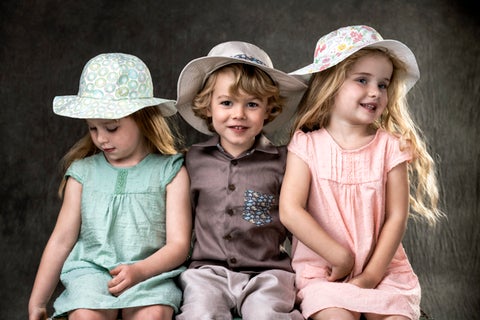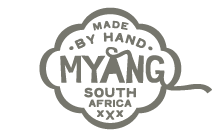
Sun safety for babies and toddlers — #besunsafe

The sun’s ultraviolet (UV) radiation is the leading cause of skin cancer, sunburn, eye damage and premature ageing.
The more your child is exposed to sunlight during childhood, while unprotected, the greater their risk of contracting skin cancer later in life.
So, let’s be sun-savvy!
Babies up to 6 months old
Your baby’s skin is still thin, extremely sensitive and can burn easily.
Therefore, they should not be exposed to sunlight at all in the first 6 months of their lives.
During this time the primary protection should be the right clothing and shade.
A broad-brimmed hat that provides good shade to the face, ears, back of the neck and eyes, should be the first and maybe obvious choice. A hat that shades the eyes properly, can reduce UV radiation to the eyes by up to 50%. Myang (Made in SA) hats are designed to cover little necks and faces properly. Visit the www.myang.co.za website for a list of stockists.
Not all children like to wear hats, but you should persist and teach them that wearing a hat is a non-negotiable part of their outdoor routine. Choose one with a colourful or funky design to help make it fun to wear. The sooner they start wearing hats, the sooner they will get used to it.
Choose a hat with a string and toggle, to make it more difficult for baby to pull the hat off of their heads. The process of teaching a child to wear a hat is called hat training, and although not always pleasant initially, your little ones will thank you later.
Remember that children imitate what they see and will copy people around them. So why not be their role model in this as well? Join them in wearing hats and remember to look after yourself as well!
Dress your baby in cool, loose-fitting clothing.
Look at the weave of the material. Hold it up against the light; the tighter the weave, the less light it will let through and the better the sun protection.
When taking your baby for walks, do it before 10am and after 4pm. This is when the sun’s UV rays are less intense. Remember to use the stroller’s canopy.
When outside at other times; always keep in the shade, but keep in mind that UV radiation is reflected off surfaces like water, cement and sand and can still reach the skin. So, the need for hats and other protection applies, even when in shade!
When travelling, hang a blanket over the side window of the car, or invest in UV-filtering film for the windows. Another idea is to use a car seat canopy.
If at all practical, invest in a good pair of sunglasses made for babies. No toy sunglasses, please! They will not meet the necessary requirements for eye protection. But remember what we mentioned earlier; a proper wide-brim hat can also reduce UV radiation to the eyes.
Babies from 6–12 months old
You can now safely introduce the use of sunscreen to add to your protection measures.
Choose a sunscreen created for sensitive skin or one made especially for toddlers.
It should provide broad-spectrum protection (protect against both UV-A and UV-B radiation) and should have a Sun Protection Factor (SPF) of at least 30.
Do a usage test (or patch test) first on a small part of the skin to check for any possible adverse reaction to any of the ingredients. An ingredient that reflects the UV radiation, like zinc oxide, is a good choice, as it does not get absorbed by the skin.
Try to apply the sunscreen about 20 minutes prior to going into the sun. This gives the ingredients time to bind to the skin. Reapply every 2 hours.
If your baby goes into the water, reapply the sunscreen as soon as you’ve towelled them off.
Even if it is less than 2 hours since the previous application, and even if it is a water-resistant sunscreen. It is most important to ensure that you use a sun hat in the pool with a string and toggle.
Toddlers/Pre-schoolers
Ah — the challenging age group!
If your child was introduced to all the abovementioned precautions from birth, this will simply be an ongoing process. It will be a matter of habit to them.
If they are in the presence of caregivers during the day, however, ensure that those in charge are aware of all the measurements you’ve put in place… and that they will implement and support the lifestyle you have established for your child.
Conclusion:
The sun is not our enemy, but we should recognise and respect its power and the damage it can cause.
Follow these guidelines, do lead by example, and enjoy the outdoors without any regrets later in life. #besunsafe
This article was written by Melinda Fick — a skin care fanatic with a special love for sun care education. View her website at www.earthlygoodskincare.co.za
